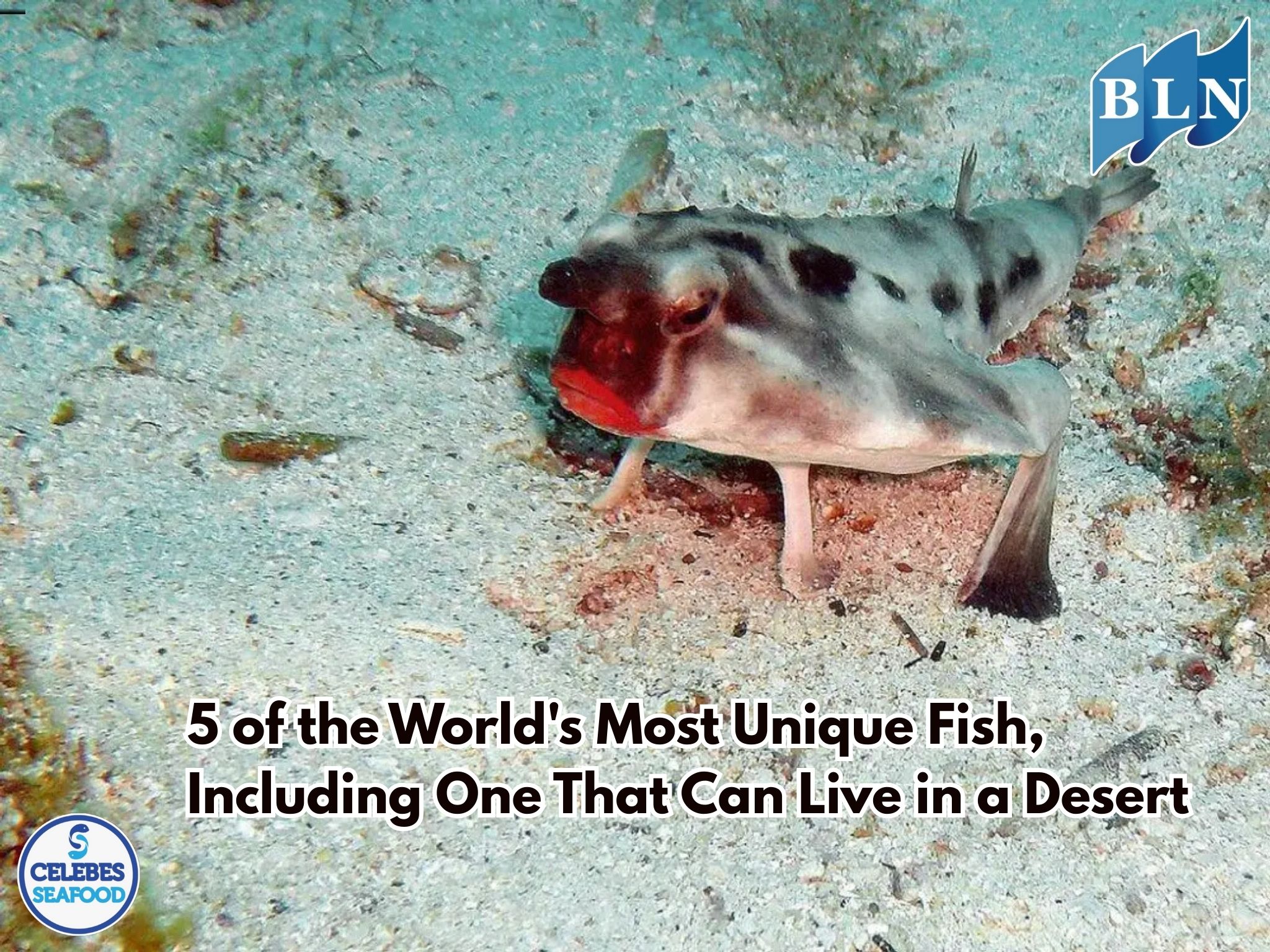5 of the World's Most Unique Fish, Including One That Can Live in a Desert
By. Rani - 23 Aug 2025
laut nusantara.com The world is home to a vast variety of fish with extraordinary shapes, behaviors, and unique traits. These unique characteristics make them a special attraction for scientists and marine life enthusiasts. The diversity of these fish also demonstrates the incredible adaptability of living creatures to their environment.
Interestingly, not all fish live in places we'd imagine, like the vast ocean or a clear river. Some fish can survive in unusual, extreme habitats, including in desert regions. These facts further prove that nature holds many amazing mysteries. According to Discover Wildlife, here are five of the world's most unique fish that many people may not know about.
1. Red-Lipped Batfish (Ogcocephalus darwini)
At first glance, you might think this creature looks more like a bat than a fish. The red-lipped batfish has a flattened body and modified fins that allow it to walk on the seafloor. They are commonly found around the Galapagos Islands and live in shallow waters with sandy or rocky bottoms, as explained by Animal Matchup. It's believed that their striking red lips serve to attract prey or a mate.
Besides its odd body shape, this fish also has a small lure on top of its head to attract prey. In this way, they can wait calmly on the seafloor for their meals to come closer. While their appearance may seem funny and unique, these fish are actually effective predators in their environment. Their adaptations allow them to survive in a competitive habitat.
2. Clownfish (Amphiprioninae)
Clownfish became famous after appearing in the animated film Finding Nemo, but their uniqueness is far more interesting than just a movie character. These fish have a symbiotic relationship with sea anemones, where they get protection from predators while the anemone benefits from leftover food and cleaning services performed by the clownfish. A special mucus layer on the clownfish makes them immune to the anemone's stinging tentacles, a trait rarely found in other fish.
Additionally, clownfish have a unique reproductive ability. All clownfish are born male, but they can change into females if needed. In a group of clownfish, there is usually only one dominant female. If this female dies, the largest male in the group will transform into a female and take over the reproductive role. This adaptation is very useful for ensuring the survival of their species, especially in a threatening environment.
3. Hairy Frogfish (Antennarius striatus)
The hairy frogfish is a predatory fish species with a unique body covered in thread-like hairs. Its shape and texture allow it to camouflage perfectly among corals and sand. This fish doesn't swim like a typical fish; instead, it walks along the seafloor using its leg-like fins. It also has a natural fishing rod on its head, which it uses to attract prey.
Despite its small size, the hairy frogfish is an incredibly fast and efficient predator. It can capture prey in less than 6 milliseconds, making it one of the fastest strikes in the animal kingdom. According to National Geographic Kids, this fish can also change its body color to match its surroundings, enhancing its camouflage abilities. With its unique hunting technique and incredible camouflage, the hairy frogfish is one of the most fascinating creatures to study.
4. Ocean Sunfish (Mola mola)
The ocean sunfish is one of the world's largest bony fish, capable of weighing over 2,000 kilograms. Its body shape is very unique, as it looks like a giant fish head without a body. They have very large dorsal and anal fins that help them move through the water. Despite their massive size, these fish are relatively slow swimmers and are often found basking on the water's surface.
The reason for this basking behavior remains a mystery, but as cited by Blue Corner Conservation, it's believed that the ocean sunfish does this to regulate its body temperature or to get rid of parasites on its skin. Additionally, this fish has a rather unique diet, primarily eating jellyfish and plankton. Although they look strange and are less agile than other fish, they are an important part of the marine ecosystem because they help control the jellyfish population in the ocean.
5. Desert Pupfish (Cyprinodon diabolis)
The desert pupfish, or Devils Hole pupfish, is one of the rarest fish species in the world. They are found only in Devils Hole, a small water-filled cave in the middle of the Nevada Desert in the United States. Although their habitat is extremely harsh, with high water temperatures and low oxygen levels, these fish have managed to survive in a unique way. They live in a tiny area with a very limited water source, making them one of the fish species with the smallest populations in the world.
The existence of this desert pupfish is a major concern for scientists and conservationists because its population often fluctuates dramatically, sometimes numbering only in the tens. Nevertheless, they continue to survive in an environment that seems impossible for other fish. The fact that a fish can survive in a desert demonstrates the incredible adaptability of living things to their environment.
The uniqueness of the fish above proves that the underwater world holds many mysteries that have yet to be fully revealed. Each species has adaptations that enable it to survive in different habitats, from the deep, dark sea to extreme waters in the middle of the desert. By understanding this diversity, we can further appreciate the importance of preserving the environment and marine ecosystems.
If you are interested in our Coral Trout Fillet Skin On, CORAL TROUT WGG WHOLE GILLED GUTTED, TOMATO COD WHOLE GILLED GUTTED please do not hesitate to contact us through email and/or whatsapp.







